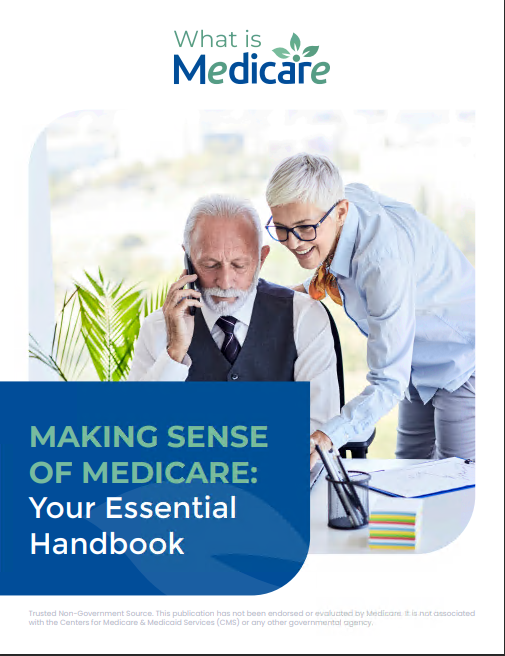Key Takeaways
-
Medicare doesn’t cover everything, and unexpected costs can arise from gaps in coverage.
-
Planning ahead and understanding potential expenses can help you manage healthcare costs effectively.
Understanding the True Costs of Medicare
When you enrolled in Medicare, you probably anticipated managing a few predictable costs like premiums and deductibles. However, many retirees discover expenses they hadn’t accounted for. Medicare coverage has limits, and these gaps can lead to unexpected expenses that can catch you off guard. Let’s dive into eight costs you might not have considered, so you can better prepare yourself and avoid unwanted financial surprises.
1. Long-Term Care: A Costly Overlooked Expense
One of the most significant costs Medicare beneficiaries face is long-term care. While Medicare Part A covers inpatient hospital stays and short-term skilled nursing facility care after hospitalization, it doesn’t cover ongoing custodial care or assistance with daily living activities, such as bathing, dressing, and eating.
Why Long-Term Care Matters
-
Assisted living and nursing homes can cost thousands per month, quickly draining your savings.
-
Personal care assistance at home, such as help with bathing or dressing, is also not covered by Medicare.
Consider planning for long-term care by exploring options like long-term care insurance or setting aside savings specifically designated for these potential costs.
2. Dental, Vision, and Hearing: Common Services Medicare Omits
Many beneficiaries are surprised to learn that traditional Medicare does not cover routine dental, vision, or hearing services. This means expenses like regular dental checkups, eyeglasses, contact lenses, hearing aids, and related exams typically come straight out of your pocket.
-
Dental care: Regular checkups, cleanings, fillings, dentures, and major dental procedures aren’t covered.
-
Vision care: Routine eye exams, prescription glasses, and contacts usually come out of pocket.
-
Hearing aids: These essential devices and related fittings aren’t covered under traditional Medicare.
You may want to consider supplemental insurance, like standalone dental, vision, and hearing coverage, to offset these potentially high costs.
3. Prescription Drugs: Navigating Coverage Gaps
While Medicare Part D offers prescription drug coverage, beneficiaries often underestimate the costs they may face, especially if taking multiple medications. Here’s what you need to be aware of:
-
Annual deductible: Medicare Part D has an annual deductible that can reach up to $590 in 2025.
-
Catastrophic Coverage Phase: Even with a $2,000 out-of-pocket cap starting in 2025, reaching this threshold can still strain your budget, especially if you require multiple or expensive medications early in the year.
To manage prescription costs effectively, review your medication coverage annually during the Medicare Open Enrollment period, which runs from October 15 to December 7. Choosing the right Part D or Medicare Advantage plan that aligns with your prescriptions can significantly reduce expenses.
4. Overseas Travel and Emergency Medical Coverage
If you’re planning to travel internationally, keep in mind that traditional Medicare rarely covers healthcare costs outside the United States, with few exceptions. If you become ill or injured abroad, you could face significant out-of-pocket expenses.
-
Limited exceptions: Medicare may cover some foreign care in emergency situations if a U.S. hospital is closer through a border.
-
Travel insurance considerations: Purchasing travel health insurance or a Medicare supplement plan that includes international coverage is wise before traveling overseas.
Planning ahead for international trips and understanding your coverage options can save you from unexpected financial burdens.
5. Excess Charges and Out-of-Network Providers: Surprising Extra Bills
Many Medicare beneficiaries are caught off guard by excess charges and out-of-network provider fees. Medicare Part B typically covers 80% of approved medical services, leaving you responsible for the remaining 20%, plus additional charges if a provider bills more than Medicare’s approved amount.
-
Excess charges: Providers who don’t accept Medicare assignment can bill up to 15% above the Medicare-approved amount.
-
Out-of-network costs: If you see providers who don’t accept Medicare assignment, you might pay significantly higher fees, which Medicare will not fully cover.
Considering Medicare Supplement (Medigap) plans that cover excess charges or opting for a Medicare Advantage plan with established networks can mitigate these expenses.
6. Home Health Aides and Personal Care: Limited Medicare Coverage
While Medicare Part A and Part B do cover some home healthcare services under strict conditions, it won’t typically pay for personal or custodial care services. This means you may incur significant expenses for help with daily activities like bathing, dressing, or preparing meals, which are essential for many older adults.
-
Medicare covers: Part-time skilled nursing, physical therapy, or occupational therapy services at home, but only with specific medical conditions and after doctor’s approval.
-
Not covered: Assistance with daily activities (personal care, meal preparation, and housekeeping) generally isn’t covered by Medicare.
Exploring Medicaid eligibility, supplemental insurance, or personal savings strategies can help cover these significant gaps.
7. Ambulance and Emergency Transportation: High Costs You Might Not Expect
Emergency medical situations requiring ambulance services can lead to surprisingly high out-of-pocket expenses. Medicare Part B covers ambulance services only when deemed medically necessary, meaning the transportation must be considered essential for your health and safety.
-
Ambulance services: You pay a 20% coinsurance after meeting the Part B deductible ($257 in 2025), even for necessary ambulance services.
-
Non-emergency transportation: Medicare typically does not cover transportation to routine doctor visits or non-emergency situations.
Planning for potential emergency transportation costs or seeking supplemental insurance that includes transportation benefits can prevent unexpected financial burdens.
8. Prescription Drug Coverage Gaps: Hidden Expenses in Part D
Despite improvements in Medicare Part D, including the $2,000 cap on out-of-pocket drug expenses in 2025, beneficiaries often face unexpected costs, particularly at the start of each year. High deductibles and medication co-payments can quickly add up.
-
Deductible phase: You must pay the full cost of prescriptions until you reach the deductible, which can be up to $590 in 2025.
-
Medication tiers: Prescription costs vary widely depending on your plan’s formulary tiers, meaning costs can fluctuate significantly depending on prescribed medications.
Review your prescription drug coverage carefully during the Medicare Open Enrollment period (October 15 – December 7) to minimize these costs.
Stay Ahead by Anticipating Medicare Costs
Medicare is a valuable health insurance option, but being aware of its limitations is crucial. Unexpected costs can disrupt your retirement budget, but proactive planning can prevent this. By understanding what’s not covered, evaluating supplemental insurance, and setting aside resources, you can confidently manage your healthcare expenses.
Prepare Now for Financial Peace of Mind
The most effective way to avoid surprises is to thoroughly understand Medicare’s gaps and plan accordingly. Assess your current healthcare needs, project potential future costs, and review your coverage options annually during Open Enrollment, from October 15 to December 7 each year. Consider consulting with a licensed Medicare agent to navigate your options effectively.
For personalized assistance, reach out to a licensed agent listed on our website today.










